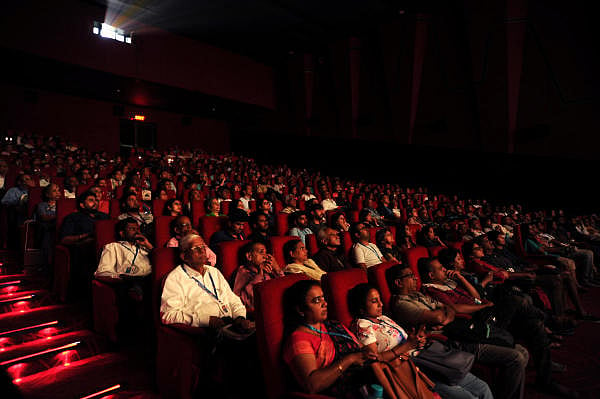The culture of moviegoing will doubtless be among the features of public life that are likely to be deeply altered even with success in reining in the coronavirus. The new hygiene regulations will probably disallow many practices that movie audiences in India took for granted, and close down the curtains perhaps on an entire mode of enjoying cinema. Luckily, sociologist Lakshmi Srinivas has captured this threatened culture of movie viewership with great care and detail. Titled House Full: Indian Cinema and the Active Audience, her study of movie audiences in Bengaluru discloses the layered cultural realities making up the great love affair of Indians with cinema.
Among the few scholars to study movie audiences, Srinivas argues that a full understanding of a movie needs to also engage the world outside the movie as it were, including the expressive conduct of the audience, the ritual festivity of the fans, the inner décor and the spatial location of the movie theatre, all of which add up to make cinema a “collective act.” In other words, the audience’s experience of cinema is inevitably a localised affair.
Most of Srinivas’s research, which included over a hundred interviews with directors, producers, actors, distributors, theatre managers and, of course, the moviegoers, took place in Bengaluru in the 1990s, before the arrival of multiplex cinema. Her observations on the “active” movie audience are derived from watching close to 150 movies -- both “superhits” and “flops” -- in single-screen cinemas. Besides, her “mobile ethnography,” which took her to film sets, music recording studios, offices of movie producers and distributors, among others, enabled a meticulous capture of the minutiae of social realities that inhere in the movie experience.
How is the movie audience “active”? Besides mattering for how movie scripts themselves are written, Srinivas notes that their “overt engagement makes visible the collaborative ‘finishing’ or reworking of the film in the theatre”: “Embodied practices such as singing or humming along with the songs and providing ‘sound effects’ to accompany visuals allow audiences to move closer to the film…” The audience’s vocal expressions of boredom or excitement matter for how the film is experienced.
Further, Srinivas argues that the environment inside the theatre proves crucial for the audience’s experience of the movie: “Sweating and scratching in the theatre, the smells of urine and of bodies in close proximity, uncomfortable seats and noises from fans…and the inhabitants of theatres – rats, bats, bugs, fireflies and pigeons – point to the ‘liveness’ of the space…the particularities of various theatres shape the cinema-going experience for audiences along with the memories, nostalgia filled accounts, stories and debates about cinema that are place based.”
House Full doubles up as an exciting slice of the history of Bengaluru. It conveys the multilingual world of movie-watching in the city where movies in English, Kannada, Hindi, Tamil and Telugu were screened all the time. Srinivas’s descriptions of some of the landmark theatres to show how the inner décor mattered for the moviegoers’ choice of theatre venue, her superb account of how queues outside cinema theatres, which can seem a way of “passing time,” for some and “a tedious chore” for others, stayed vulnerable to disorder, among many other rich vignettes she excavates from the social milieu of cinema, offer a graphic index of the pulsating movie culture in Bengaluru.
Srinivas is acutely aware of the threat that the phenomenon of multiplex cinema poses to the long-standing conventions of making and watching movies in India. Its expensive tickets keep out the poorer classes; its stiff inner décor dissuades audiences from actively interacting with the movie on the screen as well. The multiplex though has remained largely a big city phenomenon. And, even here, the pre-multiplex realities haven’t been swept away: the film magazines and fan clubs thrive in new online spaces; and the audience participation has found newer outlets in social media. Might the culture of movie-watching that House Full has excavated with such nuance and insight find a new avatar for itself?
